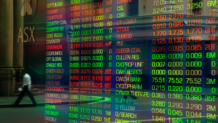AMP’s Oliver sees silver lining in bank failures
Recent ructions in the banking sector are likely to add to the risk of recession as global efforts by central banks to tame surging inflation take effect. But while acknowledging the challenges of the current environment, AMP chief economist Shane Oliver had some welcome news for those worried about another global financial crisis (GFC): “This time is very different.”
Speaking at The Inside Network’s Growth Symposium in Sydney on Wednesday, Oliver said the “silver lining” of the sudden return of bank failures is that “this tells us that central banks are starting to get traction” in their bid to bring inflation down, meaning we are likely nearing the end of the hiking cycle.
“If we’re going to see a tightening in lending standards because of problems at banks, that probably takes some pressure off central banks in terms of how much they have to raise interest rates,” he said. “There are already signs that inflation is peaking, and history tells us that financial crises lead to less lending and slower growth. When you’ve got slower growth, it means less inflation.”
And while the collapse of Credit Suisse last week following hot on the heels of several regional bank failures in the US has left anxious market observers with a disturbing sense of déjà vu, Oliver contrasted the two crises. The GFC was similarly sparked by banking sector convulsions, but the absence of asset problems that plagued the sector then makes it unlikely history will repeat itself this time around.
“If you look back through history, each major [US Federal Reserve] tightening cycle ends in some kind of crisis,” the chief economist noted – but despite the unprecedented rate hiking over the past year, the regulatory reforms since the GFC mean that critical banks, including in Australia, are now better positioned to weather economic storms, insulating the broader economy.
“I doubt very much that a council in the Southern Highlands of New South Wales has exposure to the sorts of issues that have affected US banks.”
New crisis, different outlook
The problems in the US are specific to the affected banks, which had particularly strong concentrations of deposit bases and were heavily exposed to tech companies hit hard by rising rates, Oliver explained. And the formation of cracks in one banking system puts a greater focus on others, “which is arguably why Credit Suisse ran into trouble”.
These casualties are natural consequences of central banks’ rate-hiking campaigns, as rising interest rates increase the cost of funding for banks. But so far, the damage appears to be contained, Oliver said, citing subsequent moves by the Federal Reserve and the European Central Bank to calm markets.
“Those things are positive, but by the same token these are the sort of ructions that occur after significant rate hikes,” he said.
“You will see a tightening in lending standards, and you will probably see some increase in the cost of funding for banks. That obviously adds to the risk of recession, even though the underlying factors, at this stage anyway, are nowhere near as bad as they were at the time of the GFC.”
But even with the heightened recession risk, Oliver pointed to “good news”: namely, that generally markets recover from such crises. However, he stressed the difficulty of timing the market in these circumstances.
Investors should therefore avoid seeking to time the market and remember that the tendency is for things to settle back down. “The key for us as investors is to make the most of the magic of compound interest and not get blown off by cycles.”
And while the uncertainty and disruption make it difficult to know when markets have bottomed, Oliver said it is a good sign that US sharemarkets have thus far taken the banking sector challenges in stride.
“All of this is telling us that central banks are getting to the point where they’ve done enough, and it starts to take the pressure off interest rates. That gives me a bit more confidence that perhaps the worst-case scenarios can therefore be avoided.”











